Gentleman's Guide to Amputation
Date updated: November 30, 2019 [Up]Material is free to copy, use, and modify.
Is this really a guide to amputation from the 1800s?
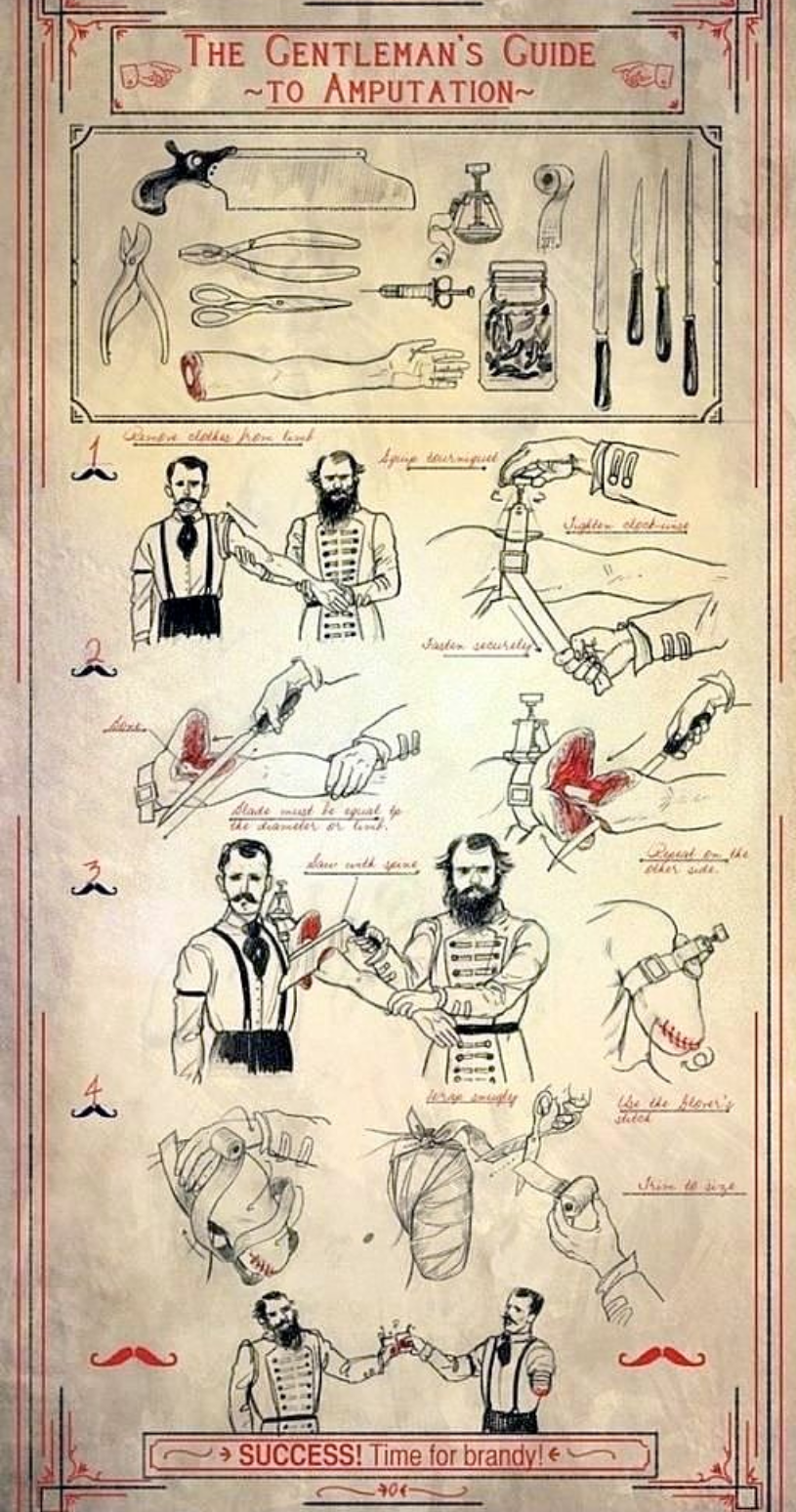
Poster titled Gentleman's guide to amputation, showing the process of amputation. The people involved seem rather unemotional and end by drinking brandy.
As per usual, let's STOP first and think about why we find this interesting. In this case it hearkens back to a relatively stoic time where life's adversities were faced with grim resolve, and maybe a bit of brandy.
In this particular case, where going to search Google for this image. We could, of course, use TinEye, Yandex, or Bing Image search, but we'll make Google Image Search our first stop.
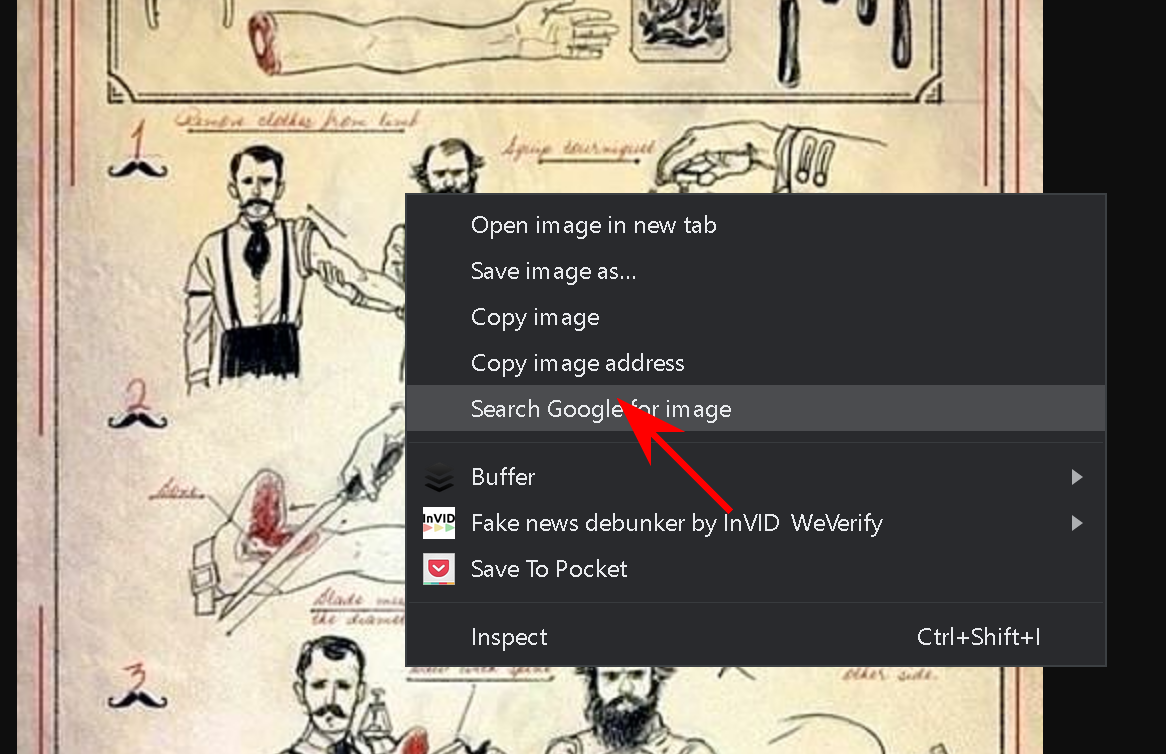
Right-click search for image action
The auto-selected search term seems decent (it's the title of the poster).
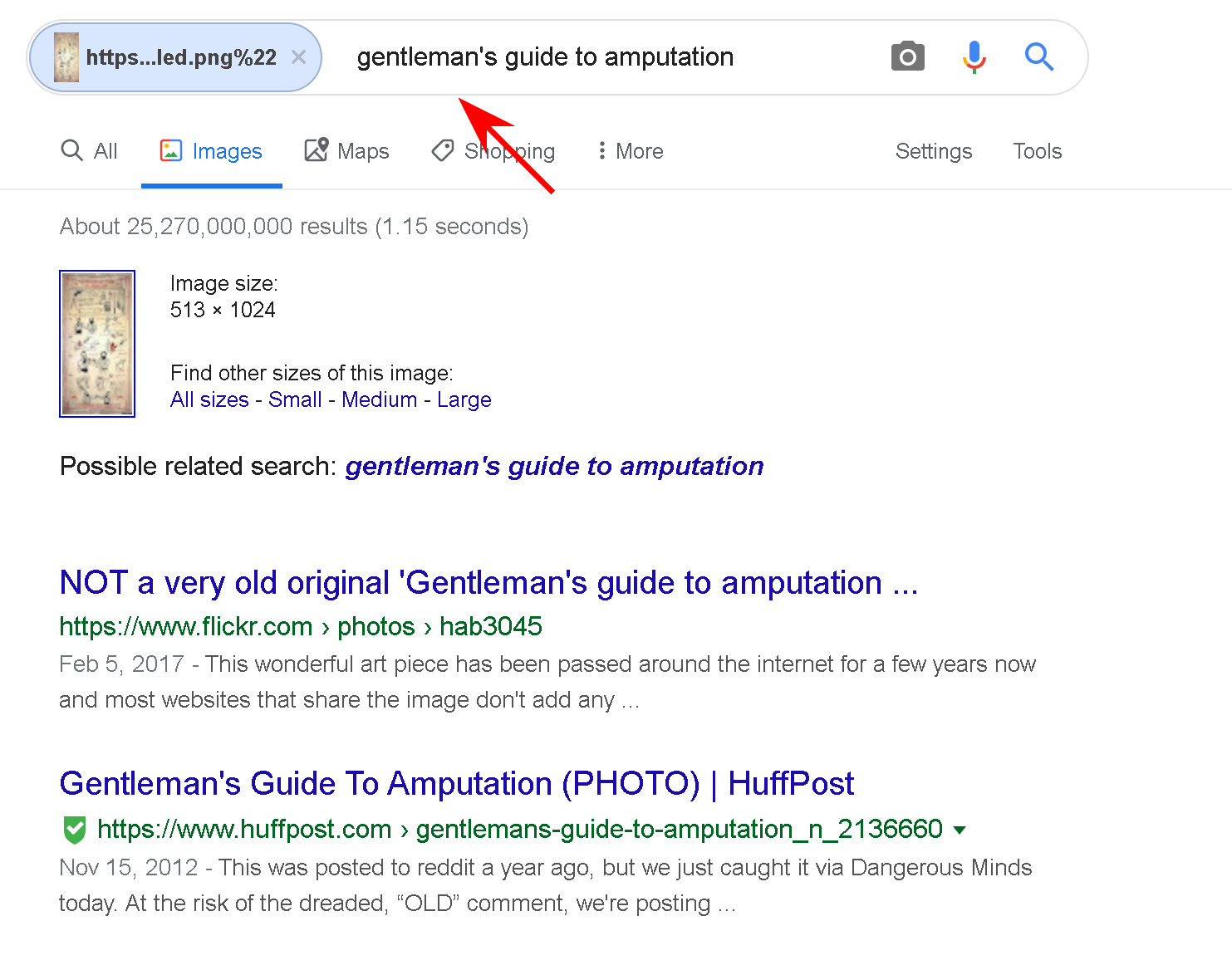
Google image search page, search term [[gentleman's guide to amputation]]
This particular result looks promising. While user comments on Flickr are not a trusted source, clicking through here might reveal the name of the creator, and with that we will be able to confirm more.
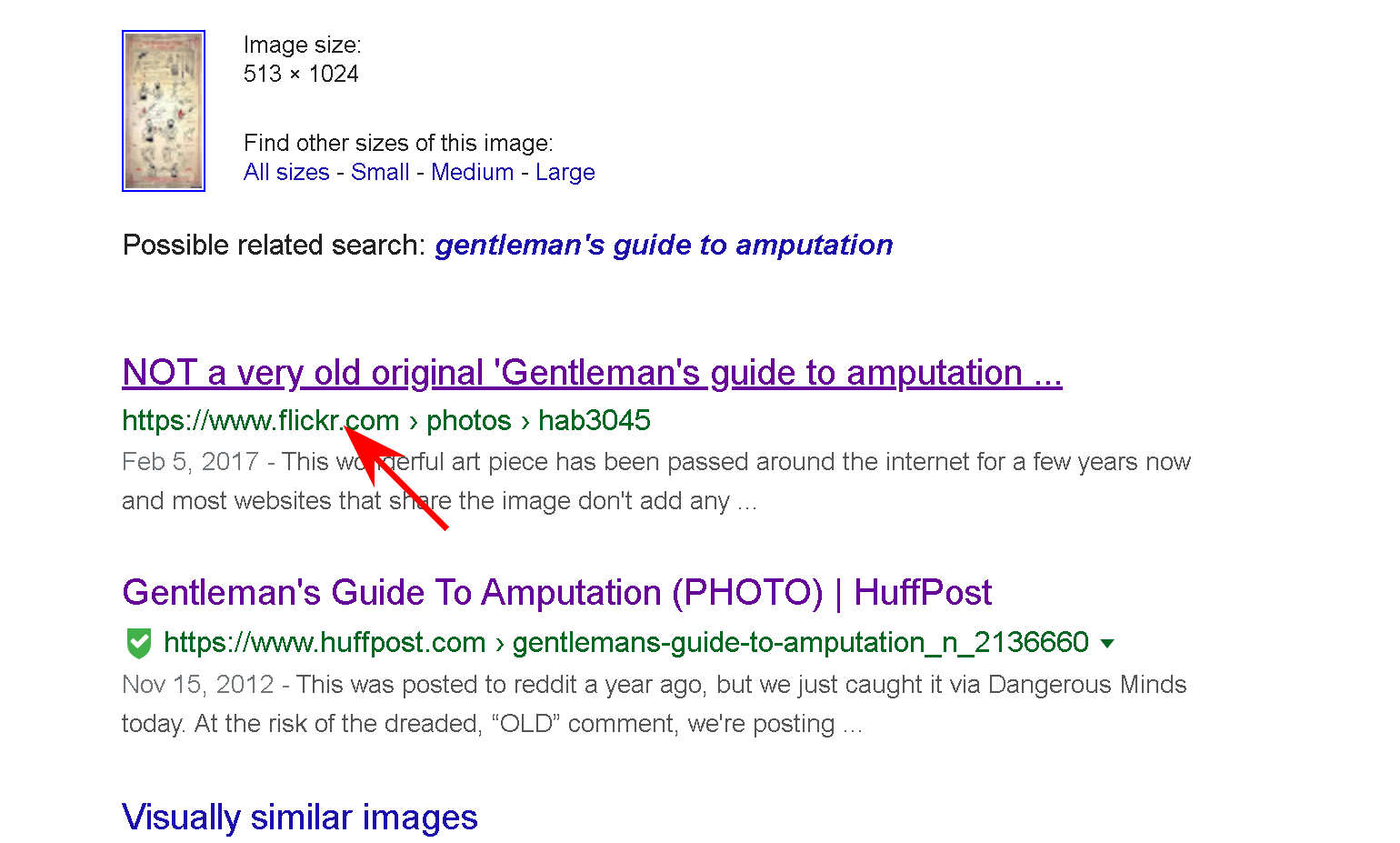
Hovering over link to a Flickr result titled "NOT a very old original Gentleman's guide to amputation..."
We find the name and date of the artist here, given by someone else. As the author here states:

Caption on Flickr (described below)
It was actually made by an artist called Onorobo.
Not in 1879 but in 2011.
For those who share the image, make sure you mention it is not really historical and also mention the artist's name!
You can see the full image (I only used the top with the title) here, on the artists page;
onorobo.tumblr.com/post/11313695888/the-gentlemans-guide-...
When we click through to the Tumblr page we find that this is an infographic the artist drew for class.
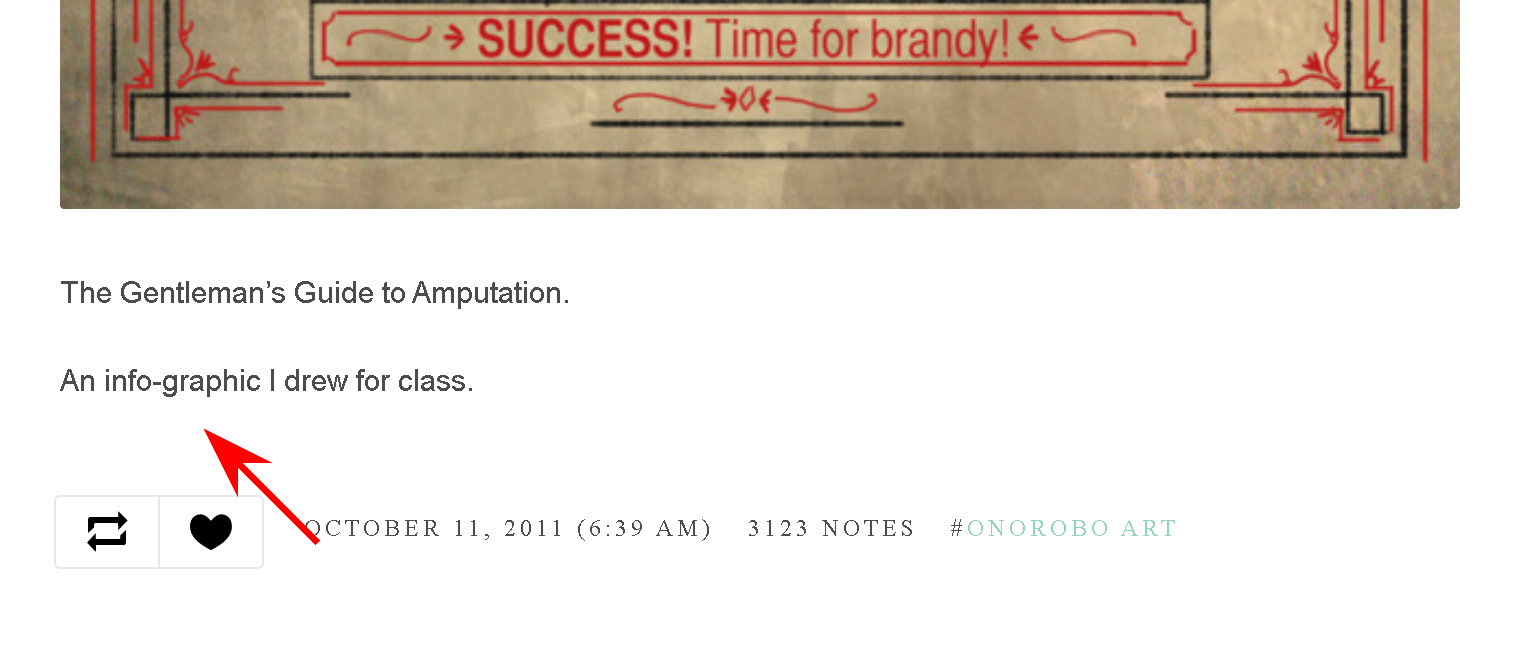
Text of a Tumblr post from 2011 of the infographic. The artist created it for a class.
I suppose you could imagine a world where a person finds a hilarious 1890s infographic in an old book and then pretends they drew it for class in 2011 several years before it goes viral. But -- well, no.
Finding the first incidence
It is possible, of course, that this person claimed credit for another person's (recent) work. Content stealing does happen on Tumblr and Instagram. We've determined that this is not an original 1890s infographic, but we can go the next step and see if this person was the first to post it.
To do that we are going to copy the image address, like so, via a right click action on the image.
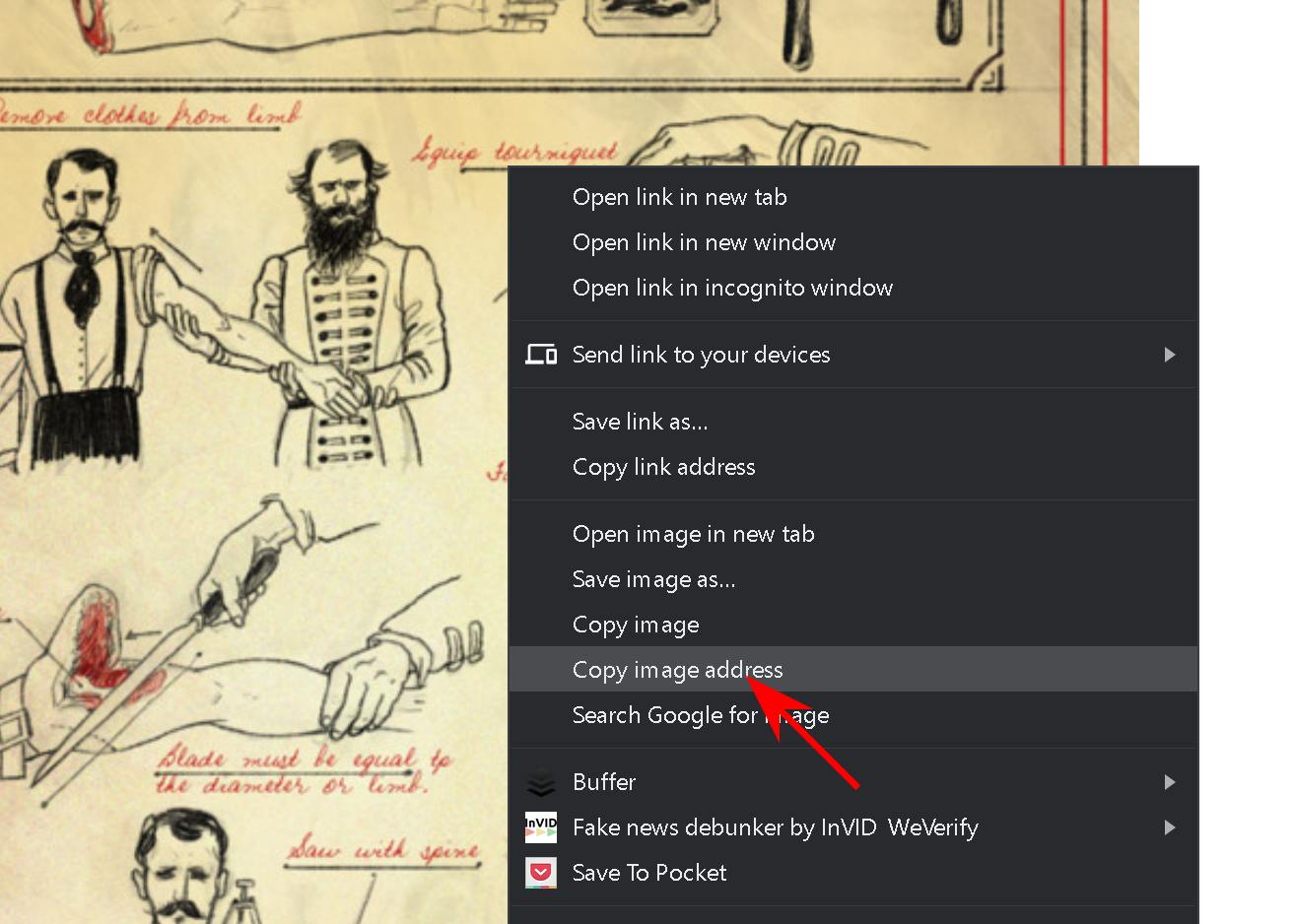
Right-clicking to get image address from context menu.
We then go to TinEye and paste in the URL of the image and search.
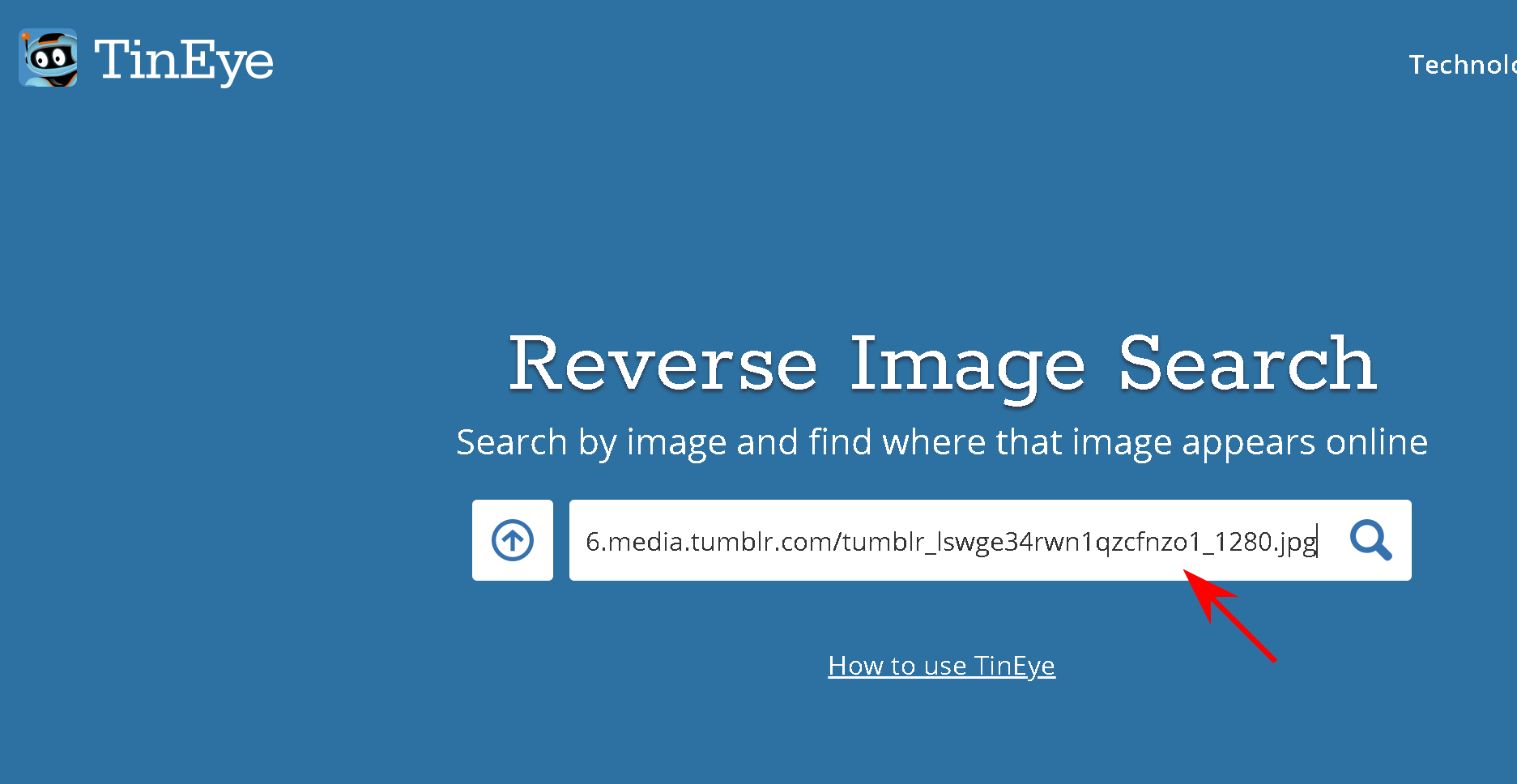
Pasting URL into TinEye search box.
When the results come back we search the search result order to show the oldest results first. What we're expecting is that the earliest posts are going to be a) somewhere around 2011 and b) shared by the Tumblr user.
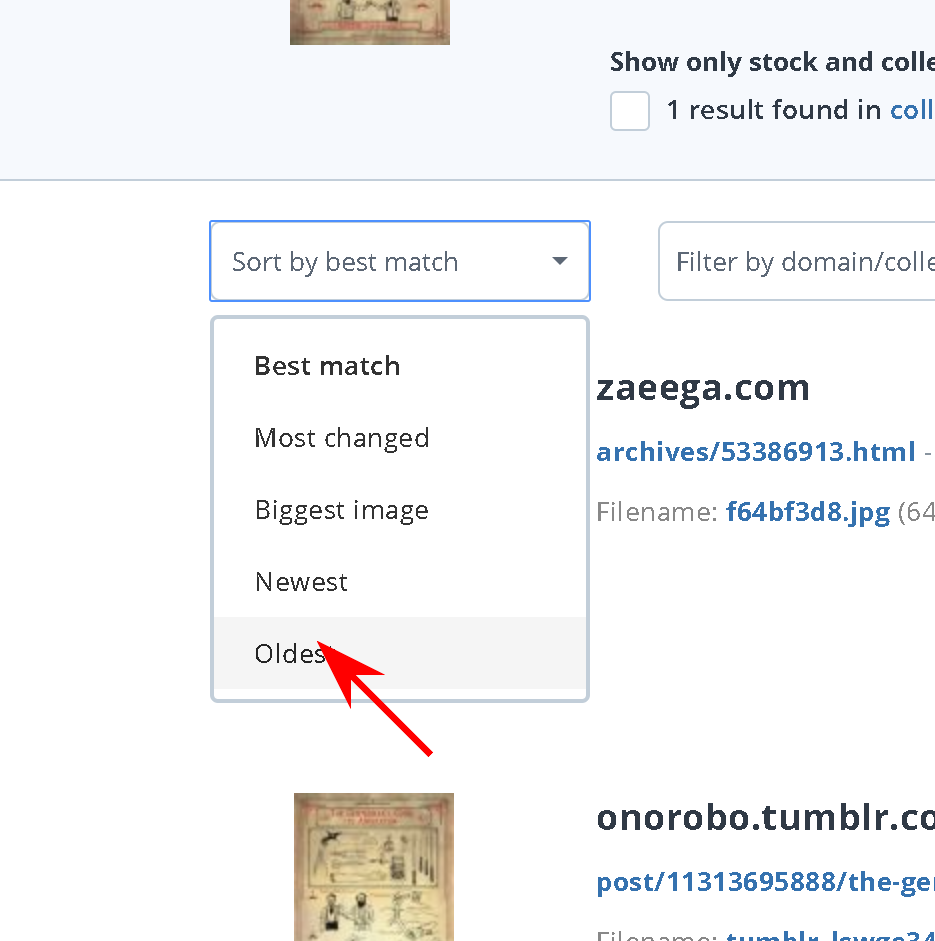
Switching sort dropdown to show oldest result first.
TinEye doesn't list the Tumblr post (maybe because that's what we entered?). But the Tumblr post was in 2011, and the next post found is in 2012. So the Tumblr post was likely the first incidence.

Showing top result of TinEye SERP, a 2012 result from wexoticgirlguide.com
Are we a killjoy here?
So here's a question: if someone posts this and claims it's original, what's the harm?
My experience is that students struggle with this question even when there are obvious harms, but particularly when the harms are more subtle. In this case, it's a lot more fun to believe this is authentic.
But I'd point out at least two harms, one obvious, and one a bit more subtle. The most obvious harm is this: Someone made this humorous infographic in 2011, and put a lot of time and talent into it. Pretending it is original robs them of the credit for that. And in particular, it robs them of the sort of links that could help them get followers and maybe make a living at this, or at least turn it into a supported hobby. So it's unethical to rob them of credit here.
The second issue is maybe a harder sell. But it's probably best to know the truth about the past if you can. It's true that those in the past were just more accepting of pain and tragedy than we are now. And maybe it's right to compare our own comfort-obsessed time against their stoicism.
But if comparing ourselves to the past
is useful, then it stands to reason we would want to compare
ourselves to the past as it existed, not a caricature of it,
right? That doesn't mean we can't laugh at it -- but
distinguishing between the past and our jokes about the past
is useful, because ultimately a clearer view of the past gives
us a clearer view of ourselves.